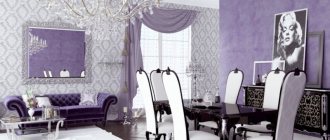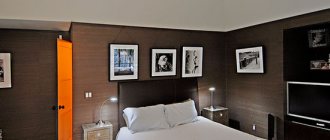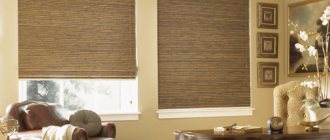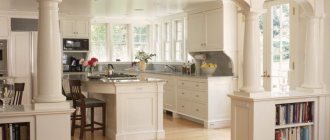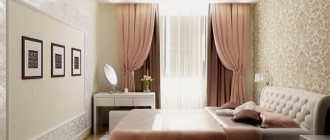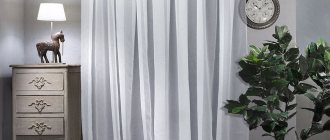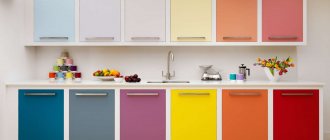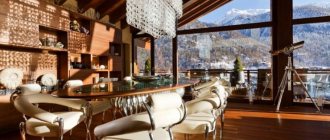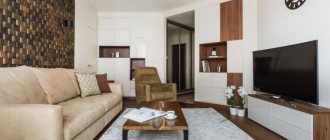The brown palette is rightfully considered one of the most comfortable and calm. The color is not spectral, that is, it is obtained by mixing several basic shades: green and red; yellow, red and indigo; yellow, red, white and green; orange and blue. Depending on their ratio and saturation, different shades of brown are obtained, admiring their versatility.
The use of brown tones in the design of the living room allows you to achieve a number of positive effects:
- a feeling of warmth, especially important during the period of prolonged autumn rains and winter frosts;
- spiritual comfort and strong associations with the comfort of home, favorite drinks - coffee, cocoa, as well as aromatic pastries and chocolate sweets;
- a calming effect that has a positive effect on the nervous system, relieving stress and irritability;
- a huge charge of positive energy and a feeling of security, reliability;
- a slight touch of respectability, stability and conservatism, an excellent way to create a luxurious, expensive interior;
- close connection with natural materials, natural textures, in demand in most stylistic trends - eco, Provence, classic, Scandinavian, rustic.
When choosing a light or dark brown palette as the main color, you need to understand that a monochromatic interior looks unpresentable and boring. Experienced designers recommend using gradients with a variety of harmoniously combined shades, or additions in the form of other colors. And also, do not be afraid to experiment with unusual accents and pieces of furniture that create a unique, individual atmosphere.
"Psychology" of brown colors
The maximum association with a woody palette, fallen leaves, earth, and finally, tends to evoke a feeling of peace and security in any person.
- Psychologists say that shades of brown can relieve stress and tension, restoring mental balance and tranquility.
- The explanation for all this is very simple - these colors resemble the natural human environment.
People who have a more conservative mindset, are unhurried and like to carefully weigh their decisions, intuitively strive for brown tones, especially chocolate or the color of coffee, cocoa, cinnamon, etc.
Also, similar colors are recommended for people who are afraid of change - such an environment will certainly give more confidence in their abilities, and will encourage family members and guests to have confidential conversations.
Peculiarities of perception, psychology and characteristics of color
The key advantage of the palette of coffee shades is its calming effect on the human psyche. The interior in dark brownish tones with well-chosen lighting allows you to relax, get rid of emotional and physical stress and feel protected. That is why almost all shades of elegant color are suitable for decorating the living room and bedroom.
The color brown is associated with naturalness and closeness to nature, since most natural building materials, such as stone or wood, are found in chocolate and earthy tones.
Shades of deep brown invariably symbolize unity with the earth and carry a message of reliability, stability, security and relief from problems to a person. This color is suitable for those who lack confidence in themselves and in the future. The calming effect of the tone helps to collect thoughts and find the right way out of any situation. Therefore, the use of positive and warm colors when planning the interior of an apartment has a beneficial effect on melancholic people who tend to dwell on life’s difficulties.
Arguments for and against a brown living room
Choosing this topic will have a lot of positive aspects:
- The presence of a variety of colors allows you to experiment with many styles when decorating;
- Brown living rooms in combination with natural wood furniture look not only elegant, but also noble and presentable;
- There is only a beneficial effect on the body without an ounce of aggression and oppressive notes;
- Practical and not easily soiled - less effort will be required for cleaning and cleaning;
- It will go well with many shades and colors (there will be no special problems with combination).
As for the negative aspects, an overabundance of dark colors in a small living room can cause the effect of gloom and limited space.
Correct zoning of the kitchen with the living room
Zoning in any room plays a big role in ensuring harmony, comfort and balance. Most often, tools for separating functional areas are needed in the living room combined with the kitchen. The degree of combination of rooms can be different - it all depends on where and how the space is arranged. For example, in a private house such premises are planned in advance and the issue of zoning is resolved quite simply, but in an apartment where there are difficulties with demolishing walls, the implementation of such a project can cause difficulties.
There are solutions for each case:
- As a rule, in spacious and free rooms, light openwork partitions, sliding panels, arched ceilings, shelving, etc. are chosen for zoning . When there is enough space, you can also arrange built-in niches, where there will be enough space for storing utensils.
- Island sets, bar counters, full-fledged dining groups are another way of zoning . In some room they can be combined, and in another they can “coexist” separately - an island, a bar counter, a dining table.
- The kitchen, combined with the living room in brown tones, can also be separated by an elevation - a podium, which will clearly delimit the functional areas . In this case, it is enough to place the furniture so that only its outline outlines the outline of the living room. One of the non-standard options is a corner sofa, installed not in the corner, but in the middle of the room.
- Textile solutions are suitable for combined living rooms with bedrooms , and canopies, simple curtains, and roller shutter models are widely used here. When there are also kitchens here, it is worth considering the same zoning for all zones.
Any zoning tools will be effective in different living rooms. When choosing the means of decorating the hall, adjacent rooms, color palette and style, you should pay attention to original solutions. But all techniques are transformed and adjusted to the desires of specific people and their lifestyle.
The individuality of the interior may not be bright, but it is comfortable and exceptional, which is especially important for people who come home after a hard day at work. Although the main thing is to provide comfort, which will be really important for the whole family.
What influences the choice of shades?
In this case, it would be stupid not to listen to the designers’ tips, for example:
- Darker colors are only permissible for owners of maximally illuminated and spacious rooms, otherwise a oppressive atmosphere and a visual reduction in area may result;
- If the living room is small, you should opt for less contrasting combinations;
- If there is a lack of natural light and sun, it is better to choose the lightest shades of brown and add more warmth through light yellow, sand or orange paints.
It all depends on the size, shape and, of course, the nature of the lighting of a particular living room.
Popular combinations with other colors
The coffee palette will not look gloomy and dull if you choose the right tones from other color schemes that can highlight and enhance the advantages of a soft color scheme:
- The color of ivory or milk in combination with chocolate tints makes the room stylish and solemn.
- To maintain an aura of coziness, combine a warm shade of cinnamon with milk.
- Bleached shades of brown are balanced by other pastel tones. Delicate peach and languid pale pink complement the mocha or cocoa-colored living room with warmth and emphasize the softness of the coffee color scheme.
- Combining with beige and white is important when creating an accent wall.
- Green is also a friendly neighbor to warm chocolate. But you should opt for calm grassy or marshy shades that will not stand out from the overall concept of the room.
- Black and coffee notes give the living room an aura of luxury. You can dilute the dark palette with decor in golden shades and bright lighting.
- The combination of brown with blue or turquoise is considered a bold, but very harmonious design move. Such a contrasting palette refreshes the interior, making it less gloomy and strict.
Current combination options
When decorating a brown living room, they rarely use only pure shades - combinations and dilutions with additional colors are often used:
- A respectable combination of brown and white - recommended for small spaces, because... will help to visually increase the space. In such cases, light paint is spread over the top half, leaving brown for the lower part of the walls.
- The all-time classic - brown + beige or milky - is also in demand quite often, as it is possible to achieve conciseness and a special effect, subject to the rules of symmetry.
- Tandem of brown and gray. Since both colors are representatives of dark tones, a shade 3 shades lighter is chosen for one of them. Thus, coupled with bright accents or light-colored furniture, it is possible to fill the energy deficit and enliven the interior.
- Combination with green, also a “natural” color (usually apple green, olive, pistachio or muted green). A more saturated emerald or malachite will fit better into the classic style. Such an organic duet allows you to achieve dynamics and add energy and freshness.
- A win-win option for combining brown with blue shades. There is a rule here - the richer the brown component, the lighter the heavenly tones should be.
- The design in brown and yellow colors will look ideal - nature itself suggests that sunny notes will naturally fit into the woody range.
Each shade will contribute to creating the overall effect, transforming the living room beyond recognition.
Attention! A common mistake is to use the most similar shades of brown - this can result in a very monotonous interior that is too difficult to perceive.
Bright accents on a brown background: how to place them correctly
The rich highlights of bright accessories help refresh the interior in dark or subdued colors, adding freshness and a positive attitude to the decor. A classic description of this design can be considered a turquoise-brown tandem of colors, which can be used in the living room, spacious bathroom, kitchen and loggia. In a room decorated in this manner, the “highlight” of the composition can be light tulle and bright sea-green curtains, sofa cushions and poufs of a similar tone and paintings depicting spring landscapes.
You can expand the space with the help of mirrors that harmonize with the abundance of natural wood surfaces. Even a small living room in a small two-room apartment will seem larger if it is complemented with an interesting mirror plane that reflects light mocha-colored walls.
In a beige-brown living room, golden highlights look impressive: bright decor, imitating precious metal, makes the decoration more original and not boring, emphasizing its status.
Secrets for lighting brown living rooms
Even if you managed to create a stylish room, without properly selected light sources all your efforts can go down the drain. If a large number of dark shades of brown are involved, more lamps will be required.
Only with an abundance of sunlight and a multi-level lighting system will it be possible to escape from a certain gloom and oppressive atmosphere.
Since shades of brown belong to the “warm” end of the spectrum, it is worth choosing several bulbs with warm reddish or yellow shades.
Cabinet
The brown color seems to be made for an office. It has a beneficial effect on the work process, setting it in the right mood. White color will help highlight the beauty of brown and instantly bring it out. Choose wooden brown furniture for the interior, and let the walls and ceiling be made in white. Create a productive atmosphere that encourages you to work. Avoid unnecessary accessories. The only thing that is relevant in the office is fresh flowers. Notes of nature will not spoil your idea.
Choosing furniture for a brown living room
In this case, an excellent option would be to install wooden furniture in a dark palette against a background of light walls. For a more neutral sofa, it’s a good idea to choose suitable paint or wallpaper, and add deep chocolate and coffee shades to the details.
If you choose a more subdued version of a brown sofa, it will look elegant, although understated, and accent accessories will add brightness.
Cabinets, shelving or a wall will be selected depending on the size of the living room and, of course, the main style chosen for decoration. The presence of mirror inserts will help increase the size of the room. Modular furniture is chosen by those who like frequent rearrangements and changes of environment.
Undoubtedly, the brown spectrum is ideal for creating a cozy home in the living room. With it it is easy to achieve a comfortable atmosphere, you can experiment endlessly and get unsurpassed results that will not leave anyone indifferent.
Interior wall in brown color
Close attention should be paid to the choice of cabinet furniture for decorating the living room. When choosing a wall, you need to pay attention not only to its functionality, but also to its appearance. It should suit the chosen interior style.
Today the market offers a huge variety of walls; they can be small or large, corner or slide-shaped.
Light brown wall decoration is practical to use and can be combined with a wide range of colors. You can't go wrong with this color scheme.
Corner walls are usually placed in the corner of the room, and they help to save free space; in addition, they are very roomy.
Mirror inserts in the wall will help expand the boundaries of the room and add light.
Modular furniture is suitable for those who like to frequently rearrange furniture, changing the usual appearance of the interior.
Photo of a brown living room
Ways to decorate walls with brown wallpaper
Using brown around the entire perimeter of the walls is not the most common solution. Usually they prefer to make different color combinations. In the case of brown, this can be done in different ways.
Among the most popular combinations are the following:
- White-brown. This is a basic combination that can be applied anywhere. Any of the pair of colors can be taken as a basis. They combine both plain canvases and use wallpaper with a pattern.
- Beige-brown. This duet is considered optimal. Both colors are related. They are easy to combine without creating a strong contrast. These colors are used to create calm, psychologically relaxing interiors.
- Yellow-brown. These colors harmonize well. The atmosphere in yellow-brown colors is always positive. You can use shades of different intensities, changing the mood of the room.
You can safely add pink, green, red, orange, gold, gray-coffee to the brown color. In any of these cases you will get the right interior. There is no need to try to “make friends” between brown and black and other dark colors.
Any acidic tones are also excluded. Paired with brown, they look even more vulgar and reckless.
How to choose curtains and textiles
Comfort in any interior is impossible without textile decorative elements. This could be upholstered furniture, toys, rugs or window curtains. What curtains go with brown wallpaper? You can choose the color of curtains to match brown wallpaper quite simply: just decide what you will focus on.
If you want to emphasize the rich shade of the walls, then choose curtains that match their color scheme or are slightly different in shade . If such an interior seems too boring or gloomy to you, you can hang curtains that match the color of the furniture, other textiles and accessories. These can be bright or light colors.
Brown interiors with pleasant walls in the color of coffee with milk, cocoa, and chocolate will be a delight for those who value dynamism, strive to find harmony in their surroundings and love energy and activity. Such shades can both relax and charge you with a positive mood when used correctly in design.
In addition, brown color has a beneficial effect on children: it promotes creative development, calms them down, and helps draw attention to individual accents in the interior.
Decorate your home in brown tones - and you will see that even after a few years this color will remain on trend.
Additional decoration of brown walls
All kinds of decor look great on a brown background. First of all, these are paintings in frames. Both wooden and metal frames are perfect for framing decorative creations.
- Stucco made from artificial materials is also successfully used to frame paintings, panels and other masterpieces.
- Any decorative element on the wall can easily become a decoration and accent of the interior.
- Landscapes look great on a pleasant chocolate background, and the gray-coffee base will be an excellent setting for modern art.
Instead of decor, you can use shelves that can accommodate various collections. A niche fits perfectly into the space of a brown wall.
